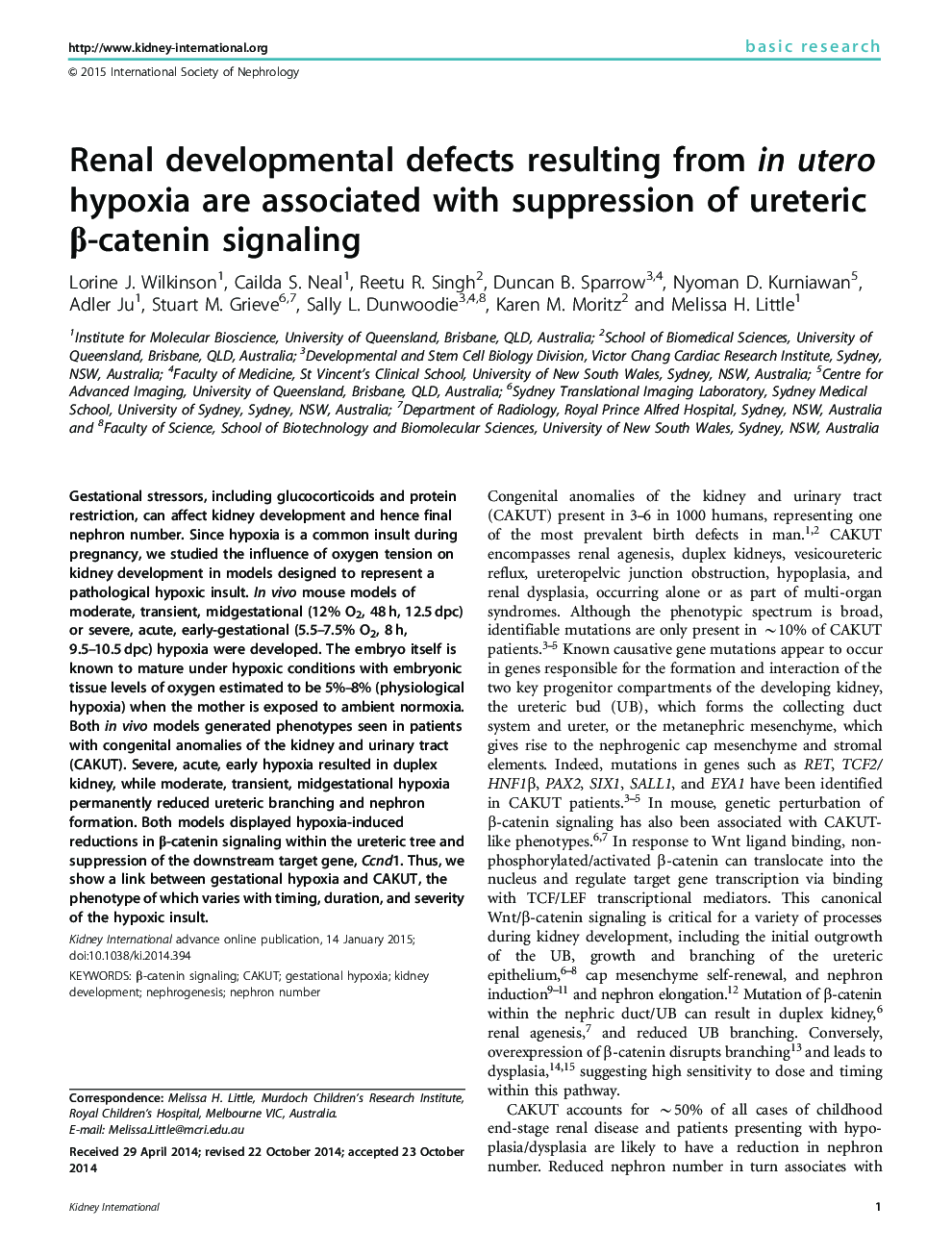| Article ID | Journal | Published Year | Pages | File Type |
|---|---|---|---|---|
| 6161786 | Kidney International | 2015 | 9 Pages |
Abstract
Gestational stressors, including glucocorticoids and protein restriction, can affect kidney development and hence final nephron number. Since hypoxia is a common insult during pregnancy, we studied the influence of oxygen tension on kidney development in models designed to represent a pathological hypoxic insult. In vivo mouse models of moderate, transient, midgestational (12% O2, 48 h, 12.5 dpc) or severe, acute, early-gestational (5.5-7.5% O2, 8 h, 9.5-10.5 dpc) hypoxia were developed. The embryo itself is known to mature under hypoxic conditions with embryonic tissue levels of oxygen estimated to be 5%-8% (physiological hypoxia) when the mother is exposed to ambient normoxia. Both in vivo models generated phenotypes seen in patients with congenital anomalies of the kidney and urinary tract (CAKUT). Severe, acute, early hypoxia resulted in duplex kidney, while moderate, transient, midgestational hypoxia permanently reduced ureteric branching and nephron formation. Both models displayed hypoxia-induced reductions in β-catenin signaling within the ureteric tree and suppression of the downstream target gene, Ccnd1. Thus, we show a link between gestational hypoxia and CAKUT, the phenotype of which varies with timing, duration, and severity of the hypoxic insult.
Related Topics
Health Sciences
Medicine and Dentistry
Nephrology
Authors
Lorine J. Wilkinson, Cailda S. Neal, Reetu R. Singh, Duncan B. Sparrow, Nyoman D. Kurniawan, Adler Ju, Stuart M. Grieve, Sally L. Dunwoodie, Karen M. Moritz, Melissa H. Little,
